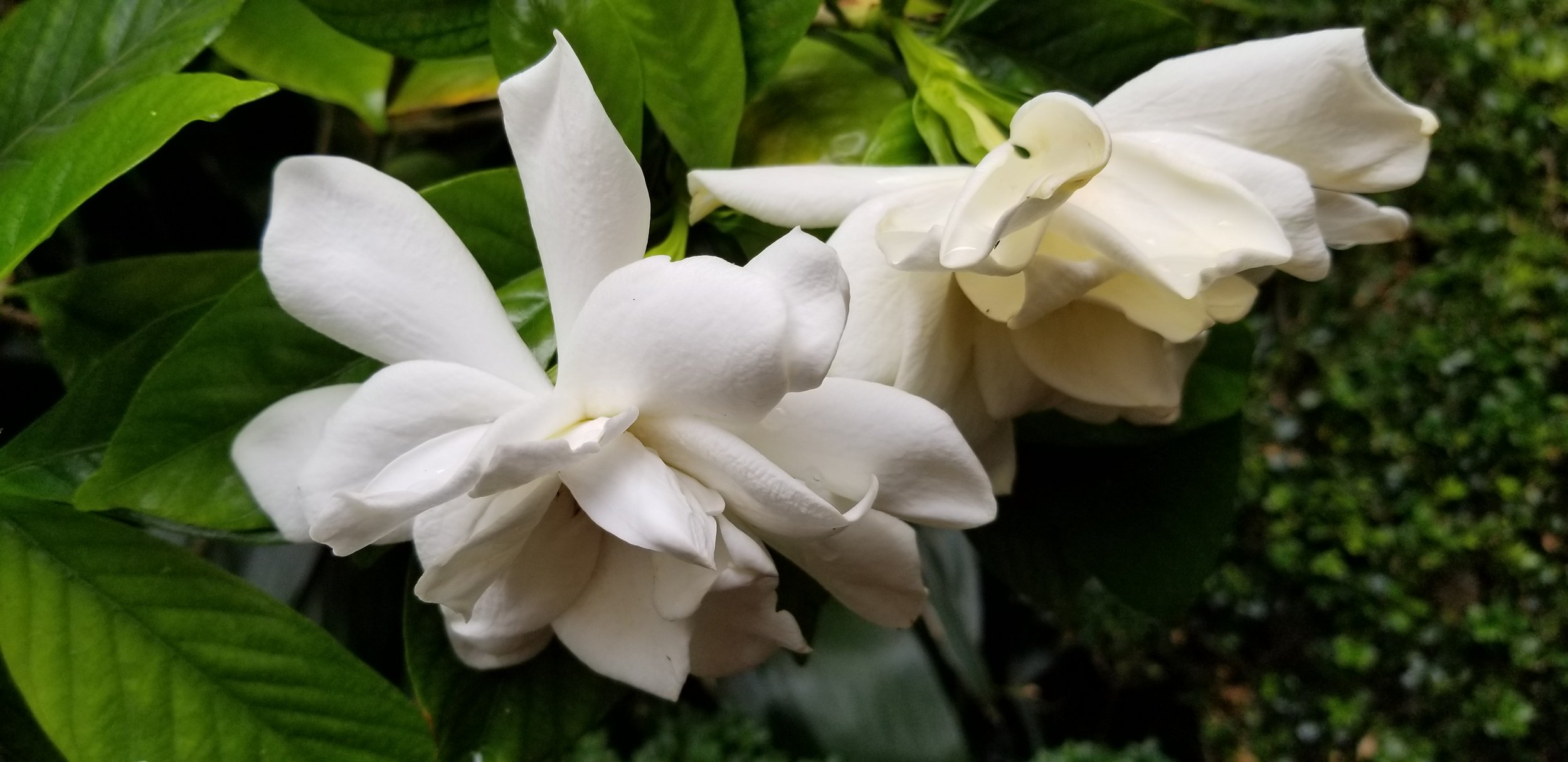
Aster to Zinnia
Some call them Darn Yellow Composites (or something a little stronger) and they are a group of flowering plants that includes daisies, sunflowers, cosmos, dahlias, asters, coneflowers, dandelions, tagetes, Spanish needle, chamomile, and helichrysum. Thistle, ragweed, artichokes, lettuce, and endive are also members of this family. The family’s official name is Asteraceae, but they are familiar to many casual botanists and gardeners as composites.

The Garden at 14 George Street
Two things about gardens in South Carolina, particularly in Charleston. Stately, organized, and beautiful gardens are tucked away behind iron gates that shelter gardenias, magnolias, azaleas, and camellias among other green and lovely plants. You will also often see the shiny blue of blue bottle trees. Both aspects combined in the garden surrounding the historic Middleton-Pinckney house in downtown Charleston.

The Smell of Rain
When you live in a desert, you find the smell of rain to be the smell of life. I spent many years in the Mojave Desert of Nevada and southern Utah doing fieldwork, hiking, and looking at the stars.

Orchid Tricksters and Beauties
Orchids have achieved their immense success as one of the most diverse groups of plants families on earth. They fascinate people around the world, inspire passionate collections, beautify our world, and play tricks on their pollinators.

Butterfly Love
Many pollinators seem to have favorite types of flowers or patterns that they recognize as rewarding. Scientists who study pollinator behavior described particular pollinator ‘syndromes’ that matched flower color, scent, nectar availability, or shape with particular insect or animal early on in their research. Rather than following such scientist originated rules, pollinators exhibit what I call tendencies but not an obedience to rulebooks.

Plant Conversations: Green Leaf Volatiles
Being outdoors for many of us means flowers blooming, walking under a tree, and that comforting and evocative scent of green from freshly mown grass. For plants, that same smell means protection and warning. Many of the volatile chemicals that we perceive as the smell of growing are actually produced by plants to defend themselves. Whether from a chewing caterpillar, a munching grasshopper, bark beetle, pathogen, or a lawn mower, the green fragrance released by plants often signals injury.

Perfume Notes: Scent of Citrus Blossoms
For my lime blossom distillation, I laid a couple of sheets under the tree, picked some blossoms by hand, pruned the tall leggy stems back and plucked blossoms off those and then shook the tree to try and get the last few flowers.

Celebrating Pollinators
Spring is here, pollinators are showing up, and I have looked back on places and pollinators, just because.

Resins: Conifers and Forest Bathing
Rich in terpenes and dripping from cones and trunks, resins from pines and firs scent the forests of the world. In the practice of forest-bathing, we breathe deep of these healing and comforting aromatics.

Resins: Labanum
An amber-colored absolute, labdanum is a thick and viscous aromatic with a deep and ancient fragrance that is resinous, rich, earthy, and uniquely incensy.